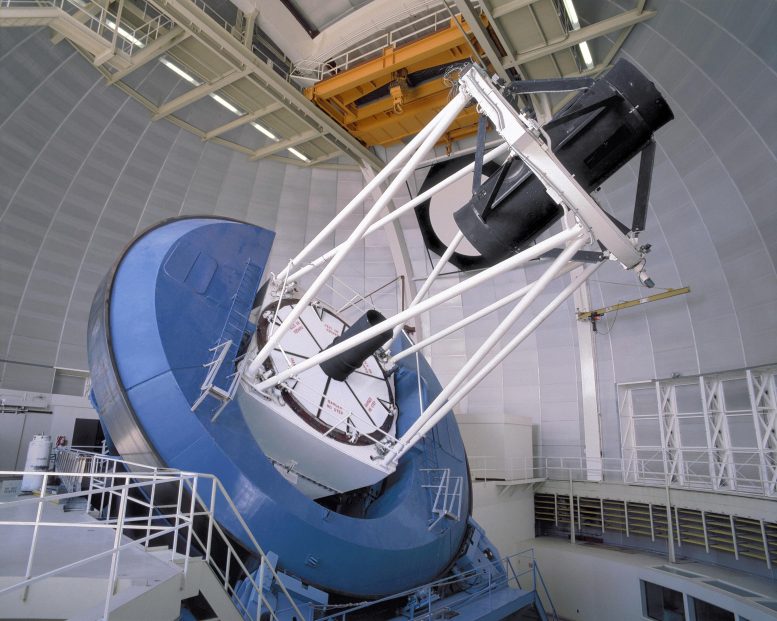
DESI was mounted on the 4-meter Mayall Telescope at Kitt Peak National Observatory. Kitt Peak National Observatory (KNPO) is located 56 miles southwest of Tucson, Arizona, in the Schuk Toak District on the Tohono O’odham Nation. KPNO is administered by the NSF’s National Optical-Infrared Astronomy Research Laboratory (NSF’s OIR Lab) in Tucson. The Mayall Telescope is a reflector telescope with a 4-meter primary mirror that sits on an equatorial mount. It is the largest of the 22 optical telescopes located on Kitt Peak. It was commissioned in 1973 and it is nearly identical to the 4-meter Blanco Telescope at the Cerro Tololo Inter-American Observatory in Chile, also operated by NSF’s OIR Lab and commissioned in 1976. Credit: DESI Collaboration
The Dark Energy Spectroscopic Instrument, which will map millions of galaxies in 3D, reaches final milestone toward its startup.
Even as the Dark Energy Spectroscopic Instrument, or DESI, lies dormant within a telescope dome on a mountaintop in Arizona, due to the COVID-19 pandemic, the DESI project has moved forward in reaching the final formal approval milestone prior to startup.
DESI is designed to gather the light of tens of millions of galaxies, and several million ultrabright deep-sky objects called quasars, using fiber-optic cables that are automatically positioned to point at 5,000 galaxies at a time by an orchestrated set of swiveling robots. The gathered light is measured by a group of 10 devices called spectrographs, which split the light into its spectrum, or separate colors.
The measurements will help scientists map the universe in 3D and learn more about mysterious dark energy – which drives the universe’s accelerating expansion – and could also provide new insight about the life cycle of galaxies and about the cosmic web that connects matter in the universe.
This video contains animations showing how the complex components of the Dark Energy Spectroscopic Instrument, installed on the Mayall Telescope at Kitt Peak National Observatory near Tucson, Arizona, work together. Credit: Dongjae “Krystofer” Kim/Kryated.com, DESI collaboration
Project completion culminates 10-year effort by international team
After DESI passed a federal review in March, members of a federal advisory board formally approved the completion of the project on Monday, May 11. DESI was designed and built through the efforts of a large international collaboration that now numbers about 500 researchers at 75 institutions in 13 nations.
“Congratulations to the DESI team of U.S. and international labs and universities in developing this amazing, state-of-the-art spectroscopic instrument,” said Kathleen Turner, DESI program manager at the Department of Energy’s Office of High Energy Physics. “We are all looking forward to using DESI’s exquisite precision to map the expansion of the universe over time.”
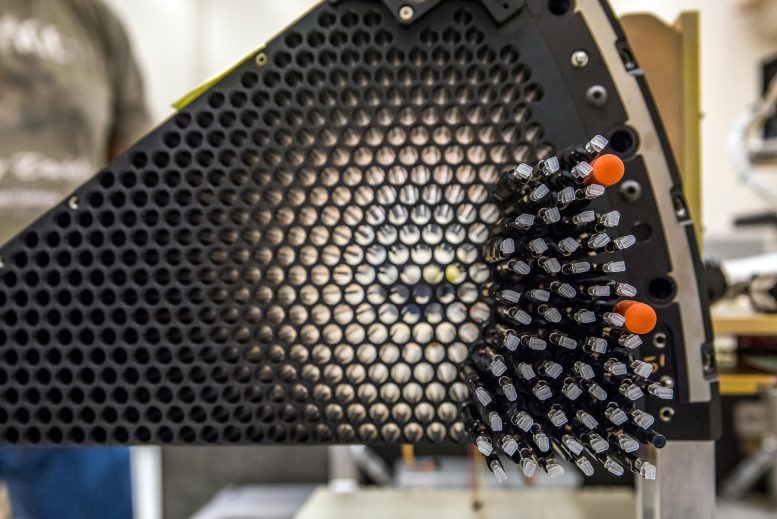
The focal plane for the Dark Energy Spectroscopic Instrument (DESI) involves hundreds of thousands of parts which were assembled at Lawrence Berkeley National Laboratory. Credit: Marilyn Chung / LBNL
Michael Levi, DESI project director and a scientist at the Department of Energy’s Lawrence Berkeley National Laboratory (Berkeley Lab), which is the lead institution in the project, said, “This is the culmination of 10 years of hard work by an incredibly dedicated and talented team, and a major accomplishment for all involved.”
He added, “We understand and appreciate the extraordinary privilege we have been given to work with this instrument – and even more so during this challenging time, as we continue as scientists to explore what lies beyond our world.”
Preparing for a restart in DESI testing
In mid-March it became clear that a final testing phase of the instrument would be abruptly suspended due to the temporary shutdown of most activities at Kitt Peak National Observatory (KPNO), where DESI is located, to reduce the risk of spreading COVID-19.
Project participants moved quickly to capture a large, last batch of sky data during the March 14-15 weekend before the instrument was temporarily shuttered the following week, and that data proved useful in the project’s review for the construction completion milestone, known as Critical Decision 4, or CD-4.
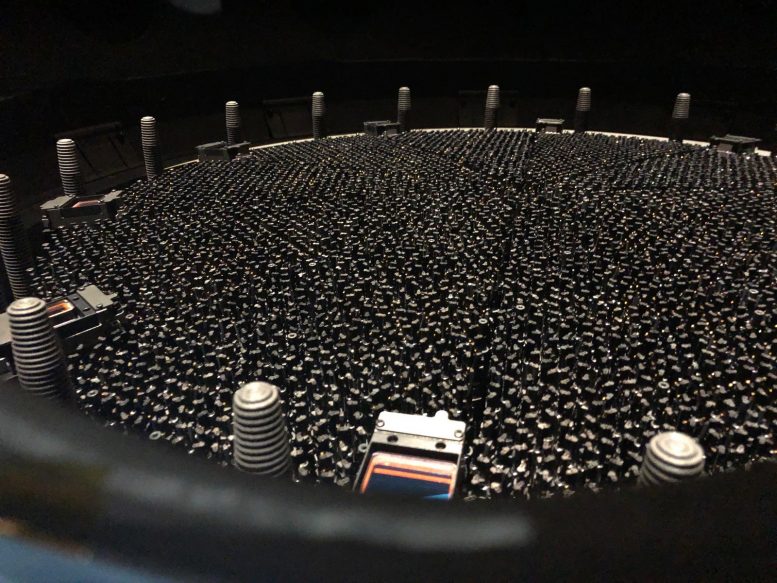
A view of DESI’s fully installed focal plane, which features 5,000 automated robotic positioners, each carrying a fiber-optic cable to gather galaxies’ light. Credit: DESI Collaboration
In the months leading up to the temporary reduction in operations at KPNO, which is a Program of the National Science Foundation’s NOIRLab, researchers had engaged in DESI observing runs to troubleshoot technical snags and ensure its components are functioning properly.
Now, project participants say they are looking forward to a return to DESI testing in preparation for its startup and five-year mission.
“The early returns from the instrument were very gratifying after years of development,” said Daniel Eisenstein, a DESI spokesperson and Harvard University astronomy professor. “Now the whole team is eager to learn what DESI data will teach us about the Universe.”

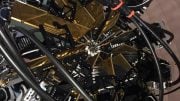
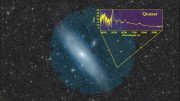
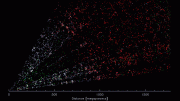
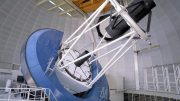

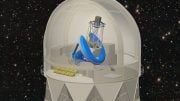
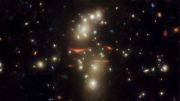
Detecting Dark energy is easy, but do not make the mistake you can do what you want with it. dealing with dark energy is not only danger but could cost the lives of people on the planet.